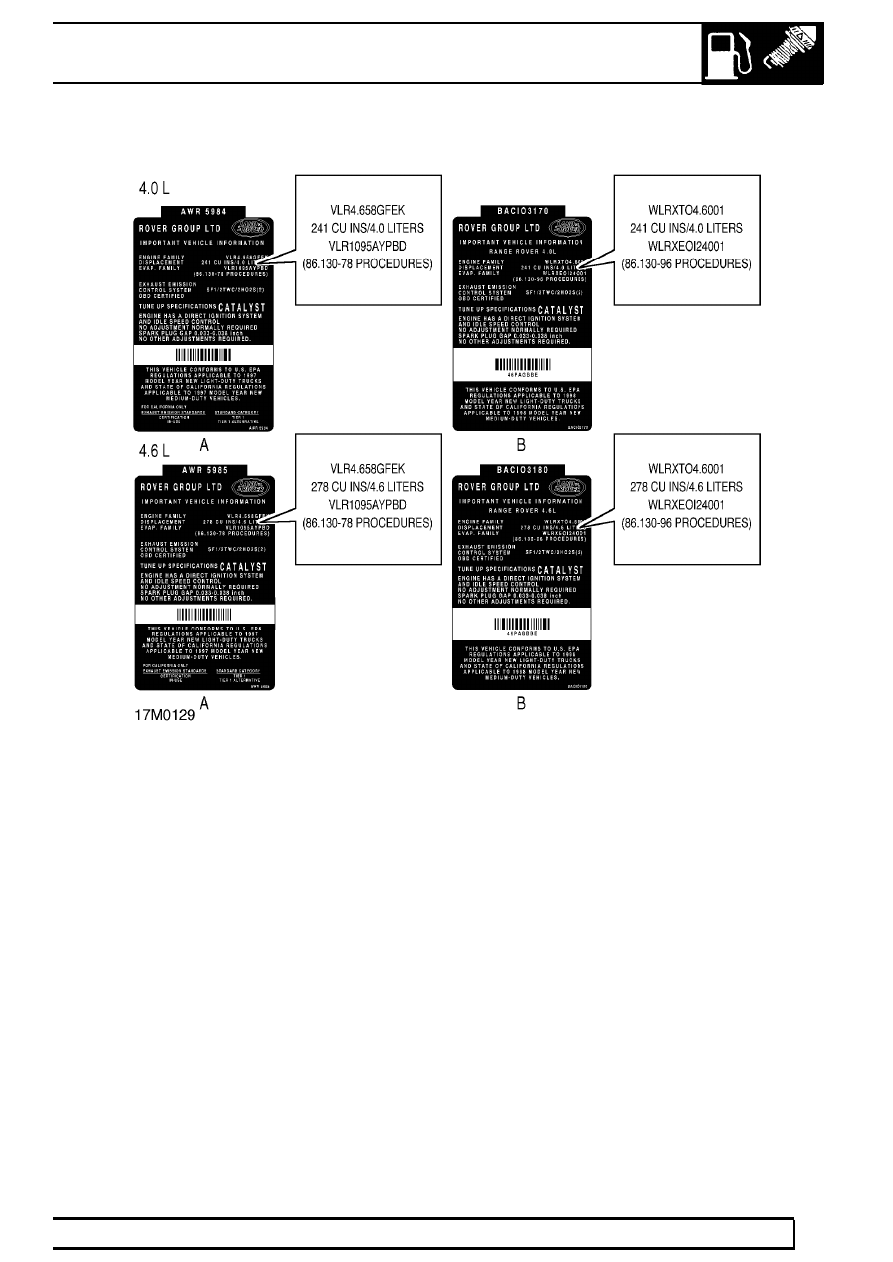Range Rover. Manual - part 65

EMISSION CONTROL
21
DESCRIPTION AND OPERATION
Identification
The system was introduced on all North American
specification vehicles from 1998 Model Year.
Advanced EVAP vehicles can be recognised by the
information contained in the EVAP. FAMILY entry on
the underbonnet Emission label (mounted on the
bonnet lock platform).
A - Vehicles without advanced EVAPS
VLR1095AYPBD
B - Vehicles with advanced EVAPS
WLRXEO124001